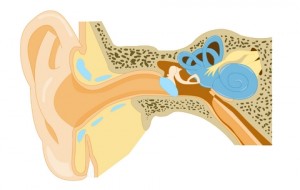GUEST BLOGGER: Kathryn Biel
As a school-based physical therapist, this issue comes up for me every year. Children are referred for physical therapy (and occupational therapy) evaluations because they are obese. Every year, I wrestle with my clinical decision making regarding these children.
The CDC posts some alarming statistics about childhood obesity:
- The prevalence of childhood obesity has more than doubled in the past 30 years
- In 2012, more than ½ of children and adolescents were overweight or obese
- 70% of obese children (age 5-17) have at least one risk factor for cardiovascular disease
Children who are obese are at high risk for the following medical conditions: pre-diabetes, cardiovascular disease, and orthopedic or joint problems. Additionally, obese children are at high risk for depression and social difficulties.
In school, we see these children as having difficulty participating in P.E. class and recess with their peers. Getting up and down from the floor can be difficult. Self-care, like shoe tying, can be challenging. Additionally, personal hygiene is often difficult. And this sounds like a silly point, but many obese children have trouble with properly fitting clothing, often leaving either stomachs or rear ends exposed.
Schools are doing their part by reforming school lunches (at the government’s doing). P.E. teachers are encouraging participation in before and after-school running clubs. Posters about healthy eating line the school and cafeteria walls. Schools are trying.
I’ve been documenting Body Mass Index (BMI) in IEP’s for students in which weight may be acting as a barrier to education. This can be a controversial practice. My purpose in doing this is to have data points in which to track a student’s progression. A child who has a BMI above the 99th percentile and then drops to the 95th percentile at the following review has shown significant improvement, even if the improvement is not apparent visually. Also, for children with whom weight management is an issue, I try to take measurements at the beginning of the school year, midway through, and right before summer vacation. It does become a delicate balance when taking these measurements and reporting on them to be very mindful of the child’s self-esteem.
In the past, some parents have been hotlined (Child Protective Services has been contacted) because of a child’s obesity and the resultant physical concerns. This is not common practice, and there has been little follow through when it was done.
However, I still struggle with the idea of pulling a child out of academic time to exercise. Firstly, it is not skilled physical therapy (or occupational therapy). Much of the time the issue is not that a child cannot perform a skill (i.e. shoe tying), but that they cannot perform it on their body. Secondly, will one session a week make a difference? Can we justify more therapy because of a lifestyle?
I often feel helpless in these cases. The teachers want PT and OT for these students. Some parents are insistent, while others are not. The meetings are usually uncomfortable.
So, as clinicians in the school environment, how are we handling this epidemic? Are you keeping these children on your caseload?
~Kathryn Biel, PT, DPT
]]>

